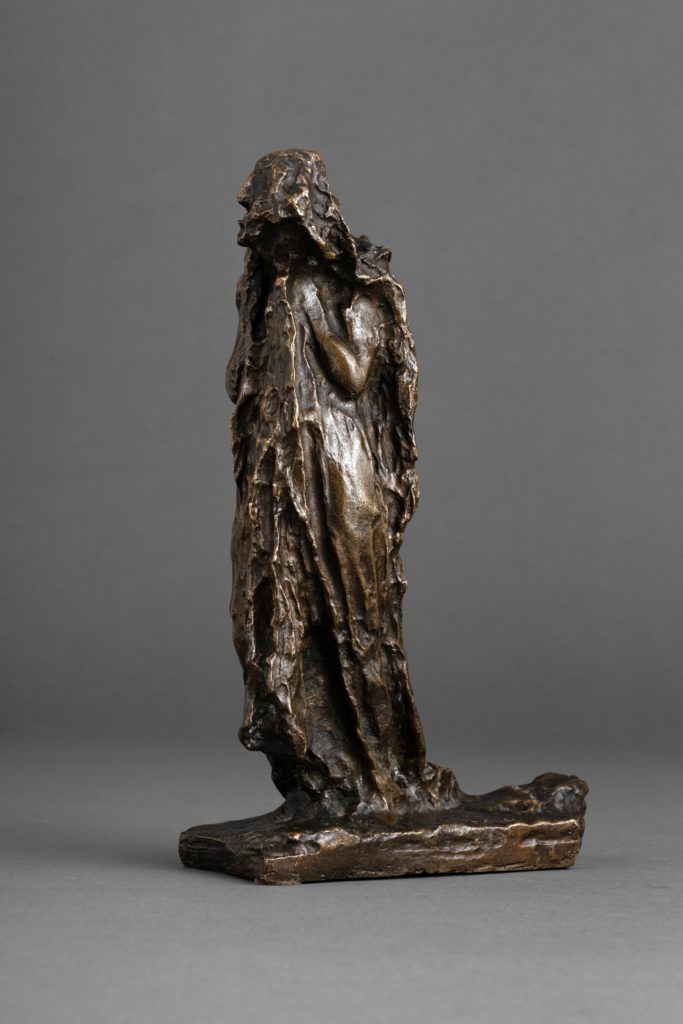A fantastic, almost spectral image, Grandi’s Mourner seems to consist only of shadows and fragments of light. Her face is absent, and her body exists only through the hair and the wrap that covers her almost entirely. Only the shape of her arms escapes from them. Its stark and brutal surface reinforces the message much in the way that the Renaissance master Donatello’s violently hacked wood did for his Mary Magdalene. Both its title and its pose connect this study for mourning figure to the tradition of funerary monument. The use of the French term pleureuse, even in Italy, reminds that such a figure performed a conventional role that may be traced back as far as the stone pleurants accompanying French medieval tombs, like the famous ones of the Dukes of Burgundy, in Dijon. In a reference to a closer antecedent, Grandi’s Mourner recalls the preeminent Neoclassicist Antonio Canova’s wax and clay models for classically robed, elongated figures posed before tombs. But Grandi arranges the figure as an abstract composition. Death is however treated with anguish and respect.
Caramel and Pirovano date this work in the period 1875-80 on stylistic grounds. It relates most closely to The Iry; while its facture resembles that of Marshal Ney of 1874-75. Several bozzetti, the original plaster model as well as another bronze cast are kept in the Galleria d’Arte Moderna in Milan. The present figure is not, however, a sketch for a more ambitious project, but a work in its own right, as indicated by the fact that it was issued as a multiple cast in bronze, although it is rare to find it in private and public collections. Even if this work was inspired by the traditional pleureuses, it was not meant to be a sepulchral object but a decorative one by itself. This very modern aestheticism was then to be found in his pupils, among them Paolo Troubetzkoy and especially Adolfo Wildt.
Giuseppe Grandi has been one of the most influent Italian sculptors and a dominant force on Milan’s artistic world during the second half of the 19th century, and most notably on the next generation, i.e. Troubetzkoy but also Medardo Rosso. He was first trained at the renowned Accademia di Belle Arti di Brera in Milan where he was taught by Vincenzo Vela who in turn was greatly influenced by the great Florentine sculptor Lorenzo Bartolini. In the late 1860s and early 1870s, Grandi became part of the Milanese avant-garde, helping to create a movement called La Scapigliatura, literally “The Bohemia”. Grandi’s greatest interest in the field of sculpture was the idea of breaking up the area around any sculpted form, i.e. break out of the sculptural surface, space and into its environment.






